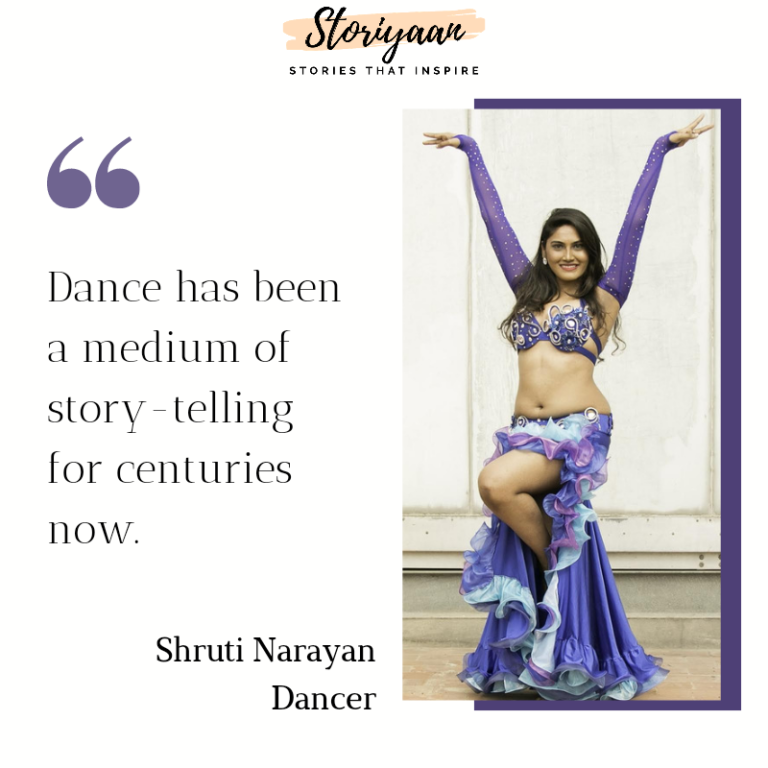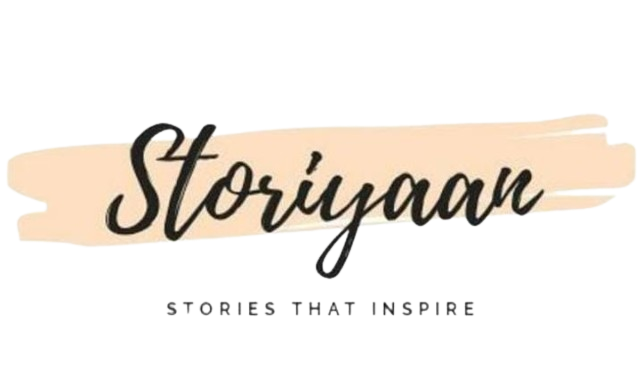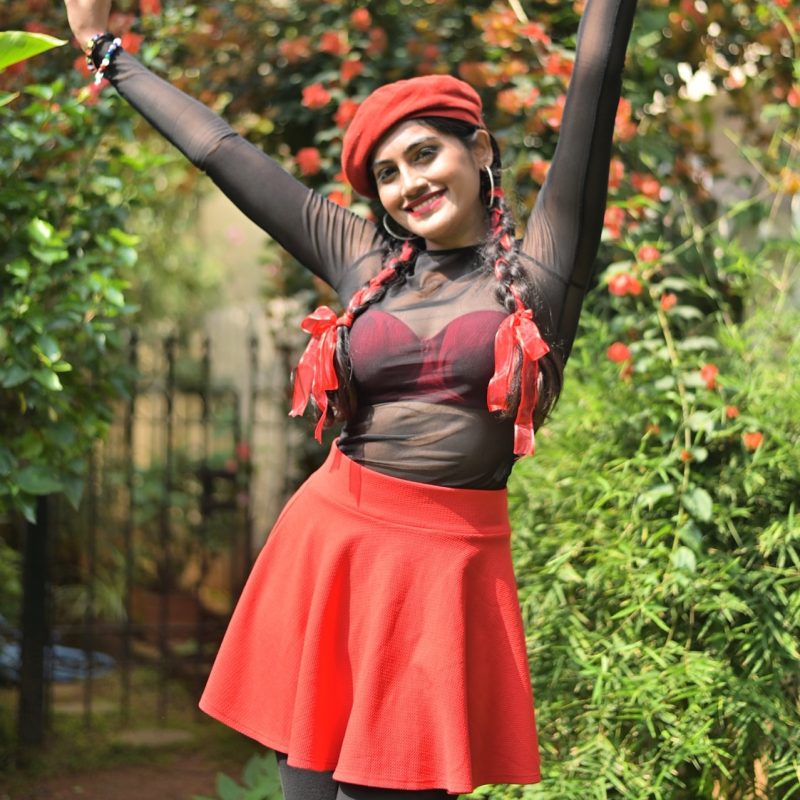Discipline and dedication can do wonders and help you achieve the greatest heights, and so was the case with Shruti. Shruti Narayanan is a belly dance artist, instructor, and performer from Bengaluru, India. She began her dance journey at the tender age of 4 in Jeddah, Saudi Arabia.
In her latest interview with Storiyaan, Shruti tells us how she started our journey as a belly dancer and the efforts and rigorous work that went into her mastering this art form. She tells us how she combined dance with story-telling and the importance of the history and cultural background behind any dance form.

Interview
Questions and answers
You began your dance journey at the tender age of 4. Who inspired you to take up dancing and what kept you motivated at it in the times to come?
Even though my parents are not performing artists, their avid support is what has kept me going. Had it not been for their push, I wouldn’t have recognized my potential and love for dancing. I had never thought that dancing would become such a big part of my life but other factors and people contributed to it as well. My dancing teacher and my guru, Smt. Pushpa Suresh has always been a big inspiration and my silent guiding force for life. I owe everything to her and my parents for the guidance and the values they instilled in me in my formative years.
While in Jeddah, you were rigorously trained in Bharatanatyam. What role did the knowledge of this dance form play in the education of Belly Dance?
In India, belly dancing is still in its nascent stages and though the social fabric is beginning to change at the moment, it is still primarily viewed as a means to and of entertainment. Off late, the work I have put in as well as the work of some of the more senior and serious Bellydancers in the country, we are slowly but surely bringing the focus back to the fact that Bellydance is associated with a whole culture, has a rich history and cannot be dissociated from its cultural and spiritual roots.
This is something I was taught and made to understand very early in my Bharatnatyam journey and this has seeped into my vision for moving ahead with Bellydance as well. I realize that every teacher adds his/her own personal element to their syllabus and course offerings and since there is no single governing body or school of thought associated with bellydance in general, there are no strict structures or formats dancers need to follow. The presentation of the art form and how people perceive it, comes down largely to how you view it yourself. I have always come from a rigorous dance background, steeped in traditions, spirituality and history and that’s how I view my practices within bellydance as well.
Could you tell us a bit about “Beyond Belly dance: A Lecture Series” and what compelled you to start it?
It’s a one-of-a-kind format in India at the moment but it’s not a foreign concept. I have always believed in a holistic approach to dance education and this series was created to supplement that. As mentioned before, Belly dance is more than just a sum of complicated techniques, glamorous costumes and entertainment. It also points out to a very diverse and rich culture with a history that transcends multiple communities and continents. I believe there’s only so much you can learn from a one or two-hour class in a classroom and started Beyond Bellydance as a means to offer additional out-of-classroom learning for students who wanted more. It started off as a very intimate gathering of 6 to 10 people and now it is a global online lecture series, where I invite experienced bellydance artists, researchers and scholars to come and present lectures on a vast range of topics associated with Middle Eastern and North African cultures.
You have performed in several national and international shows across several countries. Unfold to us some of your most memorable incidents.
Teaching or performing at an international level exposes you to a whole new world. We have international teachers coming in and teaching in India, but it is not as often as you’d see it happen outside the country. As a result, I’ve had to travel abroad to train from a number of teachers and took up certified courses. One of my most memorable experiences was in Egypt during the course, Journey Through Egypt, hosted and taught by the legendary, Sahra Kent. I was performing in a 102 year-old Cairo theatre. I had a chance to perform a solo on stage with a live-orchestra, with three generations of musicians playing for me as I danced. We do not have a live-music culture for Bellydance in India yet and most of us perform to pre-recorded tracks. The moment I danced to live music, was unforgettable and has left an indelible impression in my mind!
Tell us about your journey of laying the foundations of Samai Oriental Dance Company and your extensive research for shaping the vision for Samai.
This goes back to the time when I wasn’t even thinking of forming my own company. This may sound unbelievable, but the foundation of the company was being subconsciously built when I was still a Bharatnatyam student. The conditioning and values instilled in me during my tenure as a Bharatnatyam dancer, really helped me hone my vision and understanding of how I perceive dance education in general. This really went on to shape the foundation for Samai Oriental Dance Company, which was made official in 2019. We are still a baby company, but we have taken steady and bold steps towards preserving and promoting Oriental Bellydance in a totally new light in India.
You aim to spread your passion for the art form through out-of-the-classroom initiatives, your latest venture being “Raq and Read By SODC-An Online Book and Video Club”. Delineate a bit about that.
I’m a huge nerd when it comes to reading about all things bellydance. These last few years, I have begun to see a paradigm shift in how students are approaching dance education and seeing that people are now taking a deep interest in my company’s offerings and are now wanting to move beyond technique, I felt called to set up a club for like-minded people. It’s a club where students and artists huddle together online every Friday, read one book a month, access documentaries, watch cultural films and videos related to the Middle East through my carefully curated personal video library. Basically, we just nerd out together and we are also cultivating a habit of reading, which is always a good thing, right?
An enthusiast of dance-history, you have curated the style of using belly dance as a medium of story-telling. How did you conceive of such an idea?
Dance has been a medium for story-telling for centuries now. We have poetry, folklore, songs and the written word. Dancing however, no matter what the style, is probably one of the most dynamic means of storytelling. So, why should it be any different with belly dance? All the bellydance productions I have curated, have had a strong story-telling component and have helped me and my company express strong personal, cultural and socio-politically relevant concepts through bellydance vocabulary. Two of my recent productions, Strii – combining the stories of the female protagonists of the Mahabharat with bellydance as well as Arcanum – weaving concepts of the Major Arcana of the Tarot with the talents of 22 bellydance artists from around the world, successfully established this.
What is the story behind innovating the fusion of Tarot and Belly dance, and what kind of research went into finding a connection between the two?
Belly dance has a vivid and complex history and though, it is often linked to spiritual practices, the tarot falls under a whole different branch of spiritual practices and the occult. Although, they’re separate branches of study altogether, the concepts are intertwined by its ability to help people transmute negative perceptions and stigma to help elevate them to place of personal power, love and inner peace. To be able to bring this vision for my online production, Arcanum, to life, it took a great deal of courage to be able to bring such a unique concept to the fore, considering I identify myself as largely a traditional practitioner when it comes to bellydance styles. Fusing elements of the Tarot slips into the domain of fantasy work when it comes to identifying it as a genre or theme. Apart from this, approaching and working with 21 legendary, international artists for this production was a herculean and daunting task. The sheer amount of emotional and spiritual heavy-lifting and purging we had to do while creating our individual pieces and bringing such powerful personal processes on the screen for the world to see, was both, humbling and enlightening for all of us. I am happy to announce that despite the challenges, my vision for Arcanum and the final production were a huge success!
Could you provide us with a sneak peek into the upcoming premiere of Arcanum?
Arcanum premiered on January 17, 2021 and is available for viewing on the Samai Oriental Dance Company YouTube channel. As a part of my fourth #ArtWithHeart campaign, I set up a fundraiser for the event, raising funds for The Baale Mane Trust in Gopalapura, Bangalore. We were raising funds to support the trust with their efforts to uplift and support girls (Aged 6-18) from disadvantaged backgrounds. The fundraiser is still running till February 28. If you would like to contribute to the cause, we, the artists of Arcanum, would be most grateful!
When you first started, what are some of the hurdles that came your way and how did you battle your way out of them?
I hail from a South Indian family, and I was put into Carnatic Music classes and Bharatnatyam classes at the age of 4. For us Tamilians, being able to sing and dance is a matter of pride. When I transitioned into belly dance professionally, it flipped to “log kya kahenge”, “who will marry you”, “what kind of future could you possibly have as a dancer”. It’s true. Artists, as it is, don’t have it easy, and being a professional bellydance artist is definitely a struggle. I’m just grateful that my parents have been supportive of my choices from the first day. That’s all I needed to really push my way through. And here I am!
At what age did you find a calling for Tarots and how have your abilities developed over time?
I have a professional Psychic Mediumship and I am a certified Tarot and Oracle Card Reader. I also identify myself as an intuitive empath. I developed the ability to pick up on people’s energies, always had strong gut feelings as a child and developed a keen sense of perception over the years. All of us have a strong sense of intuition in our formative years, but we are conditioned to believe and accept what we are told and experience in the 3D as the full perception of our reality. My experiences growing up helped me understand and hone this better but it was only the last year that I had a big spiritual break that led me towards fully integrating my lifelong lessons with the Tarot. You can check out my offerings on my Instagram page, TarotTalk By Shruti
What is that one lesson that you learned from life the hard way and would like to pass it on to the readers?
I think we just need to detach ourselves from the notion that there are shortcuts to success. No matter what field of work you’re in or where you’re at in life, don’t be deterred by the thought of hard work. As cheesy as it may sound, Rome wasn’t built in a day. By looking at shortcuts to success and instant gratification, we are only setting ourselves up for disappointment. As a collective, we need to learn to be diligent, patient and practice discernment
Quick 5
a. Your greatest achievement? : Making my parents proud of the decisions I’ve taken for my career. Their belief in my work is what keeps me going.
b. Your dream collaboration : Working with my belly dance idols. There are so many!
c. The most difficult project you have worked on? : Arcanum for sure.
d. Favourite part of the day? : Morning
e. Dream vacation? : Beaches. Beach girl for life.

